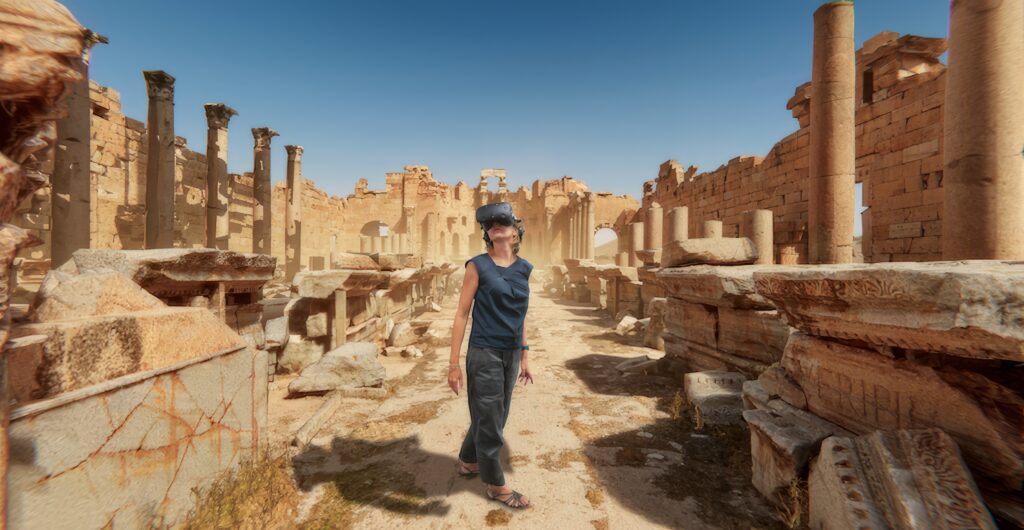Welcome to the latest blog from We Are Collider, where we’re diving into the behavioural and cultural dynamics behind immersive brand experiences.
Powered by insights from Arq, our dedicated R&D lab, this blog zeroes in on what truly drives effective, emotionally resonant immersive experiences. We’ve been taking an in-depth look at their “STAGE” model, a behavioural-science framework based on academic research, expert interviews and an in-depth survey of 550 UK adults. As part of the model, Arq identified five behavioural science-based levers for effective immersive media activations:
- Self: empower personal identity, ownership and creativity
- Transformative: enable growth, meaning, inspiration, or real-world impact
- Accessible: ensure ease of use, inclusivity, trust and comfort
- Gamified: use play, competition, interactivity and social bonding
- Extraordinary: deliver awe, surprise and out-of-this-world experiences
Last time, we explored the “S” for Self, revealing how identity, personalisation and digital sovereignty shape how people engage with brand worlds. But identity is just the beginning. The next stop on the STAGE journey is ‘Transformative,’ the lever that moves immersive marketing from fleeting fun to something far more powerful: meaningful impact.
So, what is ‘Transformative’?
In behavioural terms, transformative experiences are events that enable growth, foster insight or spark change. They manifest differently for everyone, but common features can include feeling changed, more connected, more inspired, even altered in how someone might see themselves or the world around them. Transformative experiences aren’t just engaging; they can radically shift someone’s perception, inspiring action and leaving an indelible mark.
In Arq’s STAGE research, participants described transformative moments with phrases such as: “it made my life better,” “it was meaningful and inspiring,” or “the brand connected with me meaningfully.” These vox pops speak to experiences that are moving beyond being throwaway brand interactions into moments that genuinely ‘stick.’ And in a culture increasingly craving purpose, authenticity and emotional connection, that ‘stickiness’ is marketing gold dust.
The psychological science of the ‘transformative’
Transformative experiences are so effective because they tap into deep-rooted psychological drivers. They inspire, they augment, they connect, and they create lasting memories. Behavioural science offers a few key insights:
- Inspiration unlocks action: Inspiration is an emotional state that opens the door to new possibilities. When people feel uplifted or moved, they’re more likely to explore, share and take meaningful action.
- Psychological ownership builds belonging: When users can shape or personalise an experience, choosing their path, building their avatar, or co-creating content, they feel invested. This sense of ownership increases engagement, emotional resonance and brand favourability.
- Merging real and virtual deepens understanding: AR and immersive technologies allow people to move digital experiences directly into their physical world. This makes information more tangible, relatable and memorable. Whether it’s visualising a product in your living room or exploring a virtual rainforest from your sofa, when the boundaries blur, the message hits harder.
It’s also not just about the tech itself, but how it’s used. As the Chief Marketing Officer, Innovation & Foresight Strategist, Sasha Wallinger puts it: “What’s exciting is the integration between a product that’s physical and a product that’s virtual… bringing the immersive to our homes.” This ‘integration’ is the beating heart of transformation and the secret sauce behind some of the world’s most emotionally powerful immersive brand experiences.
How brands are pulling the ‘transformative’ lever IRL
Lots of companies are embracing this as a way to drive brand interactions and a compelling value exchange. Alo Yoga, the wellness lifestyle brand, for example, recently created its very own calming sanctuary within Roblox, a far cry from the platform’s usual madcap chaos. This ‘mindful metaverse’ was one in which users could engage in guided meditation, breathwork and digital self-care rituals. The experience didn’t just boost brand awareness, it promoted mental wellness, built emotional connection and aligned the brand with users’ values.
In another great activation, Porsche’s AR Visualiser let customers design their dream car and see it rendered in their own drive. This wasn’t just about slick 3D graphics; it was about making aspiration real. By giving users personalised control, Porsche turned a passive desire into an active emotional connection. When you can imagine yourself behind the wheel, the brand becomes more than a logo; it becomes part of your vision.
In August 2024, Walmart brought its relaunched Gen Z‑focused fashion line No Boundaries into the virtual world through its Walmart Discovered platform on Roblox. The immersive experience featured a curated drop of real-world No Boundaries outfits, styled by a popular Roblox creator, which users could purchase with Robux and unlock digital twins for their avatars. This creative fusion of physical and virtual commerce was driven by the insight that around 42% of Gen Z users mirror their avatar style in real life.
Finally, EE recently turned the UK into the world’s largest gaming arcade. Iconic landmarks from Brighton Pier to Wembley Stadium were transformed into mixed reality playgrounds packed with AR, mobile, Fortnite, TikTok and endless runner mini-games built for every level of player. The campaign culminated in a finale on Fortnite with a custom island featuring the Sidemen, Josh, Tobi and Ethan, who co-hosted a live Twitch stream playing with fans and unveiling treasure-hunt style game chests filled with prize codes.
Transforming the passive into the powerful
In a market drowning in content and scroll fatigue, experiences that actually mean something are the only ones that cut through. Today’s audiences want to feel something, to attend experiences that reflect their values, unlock new perspectives and help them grow, and this is exactly where Transformative immersive experiences shine.
They drive emotional loyalty, spark word-of-mouth buzz and lead to real-world action. When people feel inspired, seen or empowered, they remember it and they share it. As Arq’s whitepaper makes clear, brands that pull this lever aren’t just chasing attention; they’re building deeper, longer-lasting emotional currency. Because when you ditch the gimmicks and create something truly meaningful, this is when marketing crosses that all-important threshold from being something that is ‘seen,’ to being something that is ‘felt.’
Stay tuned for the third STAGE lever, tapping into inclusivity, ease of use and perceptual fluency, creating experiences that are ‘Accessible’ to all.
Want to unlock the ‘Transformative’ lever in your next immersive brand experience? Email Charlotte to explore how Arq’s STAGE model can sharpen your next activation: charlotte.bunyan@arq-lab.com
Image source: Alo Yoga





